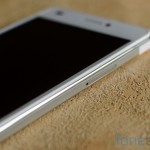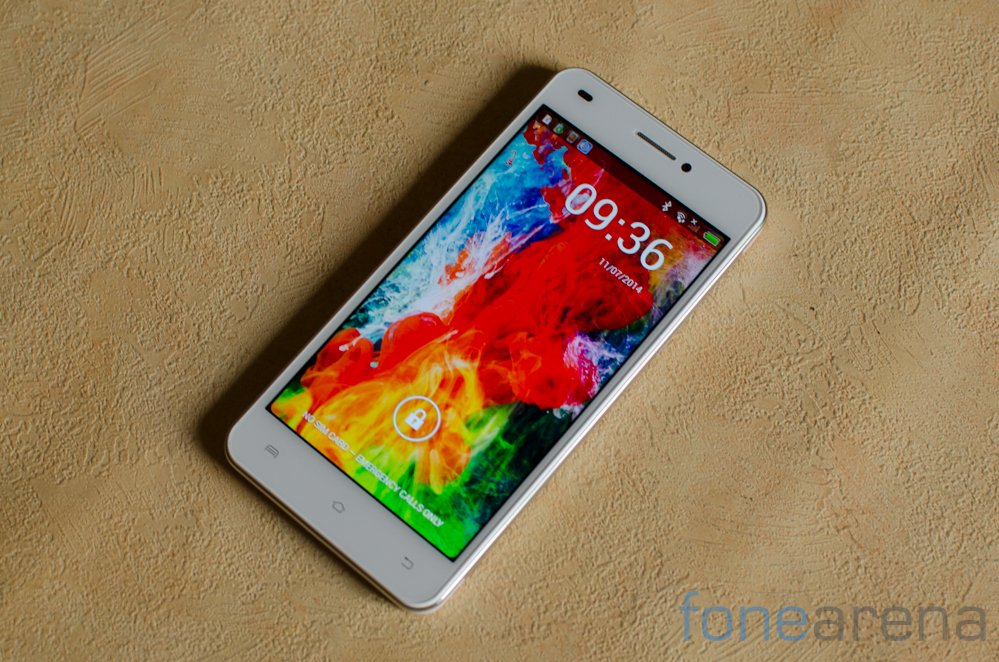
XOLO is a well known player in the Indian smartphone space. With several class leading devices over the last few years, it has established itself as a player that provides quality hardware with well optimized software at a price point that is within the reach of most buyers. The company recently launched the XOLO Q1200 and we take it for a spin. Read on to find out what we think of it. Xolo Q1200 specifications
- 5-inch (1280 x 720 pixels) HD IPS display with Corning Gorilla Glass 3 protection
- 1.3 GHz quad-core MediaTek MT6582 processor with Mali 400 MP2 GPU
- Android 4.2 (Jelly Bean), upgradable to Android 4.4 (KitKat)
- 8MP rear camera with Dual LED Flash, Sony Exmor R sensor
- 2MP front-facing camera
- 3.5mm audio jack, FM Radio
- 1GB RAM, 8GB internal memory, expandable memory with MicroSD
- 3G, WiFi 802.11 b/g/n, Bluetooth 4.0, GPS, USB OTG
- 2000 mAh battery
Hardware
The XOLO Q1200 is a fairly run of the mill Android device and taking a look at it, the phone seems to lack a unique design perspective. It feels quite solid in the hand though the straight edges might make it appear a bit more chunky than it is. The front of the phone definitely seems to be inspired by the Apple iPhone.
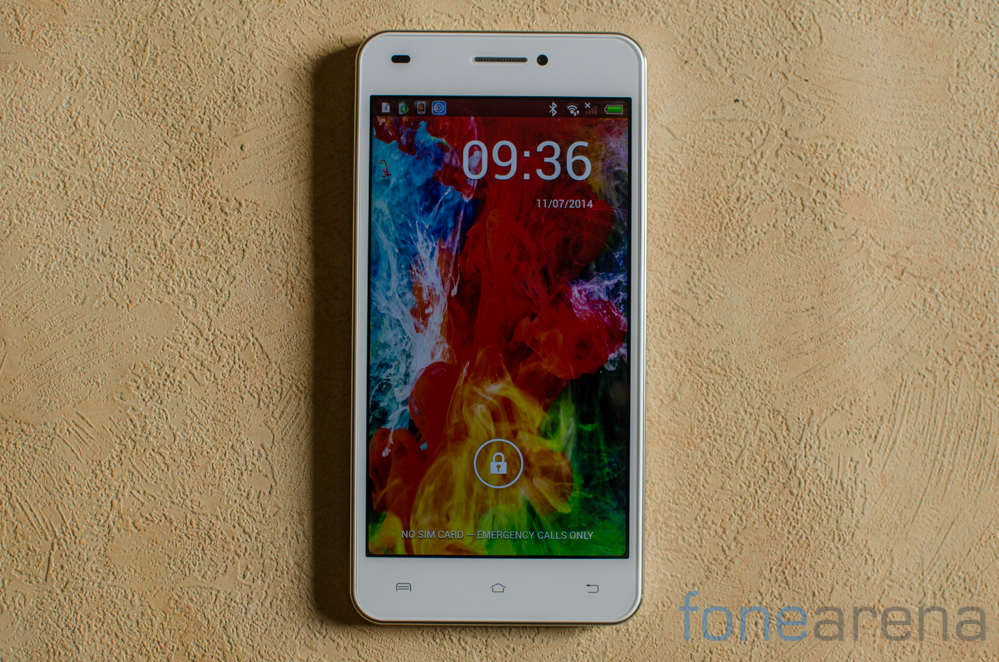
A 5 inch 720p display is placed up front with Gorilla Glass 3 coating on top of it. Below the display lie the three capacitive keys that correspond to menu, home and back. A 3.5 mm audio jack is placed at the top while the bottom includes a micro USB slot.
The button layout of the handset is similar to most Android phone out there. Alongside the three capacitive buttons as mentioned above, there’s a volume rocker and power key to the left. On the right side of the handset is the tray for both the micro SIM card and micro SD card slot.
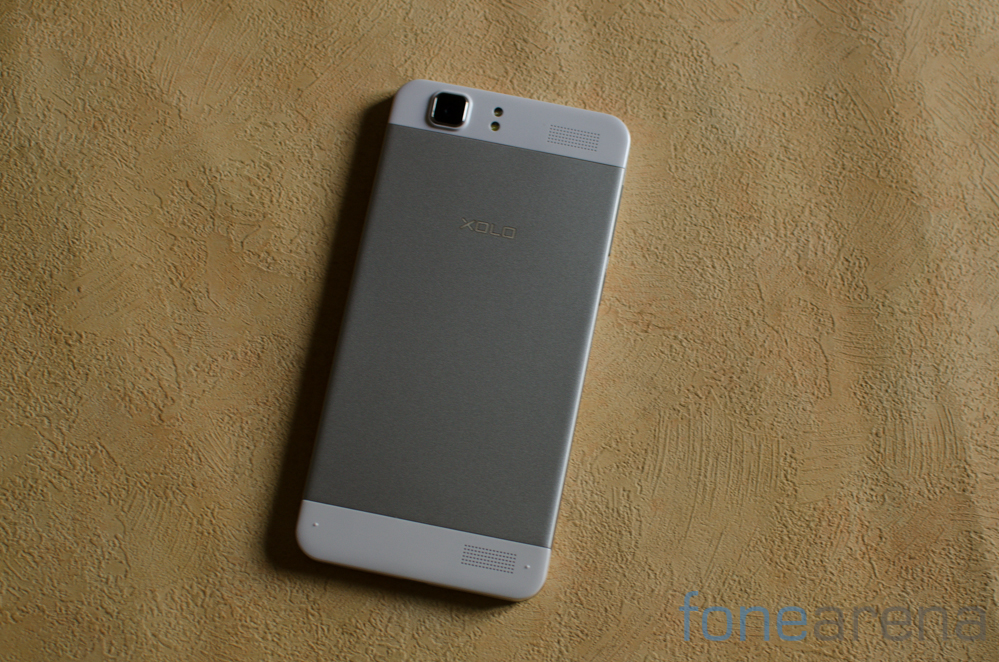
So far so good, moving on to the back of the phone is where things start getting a bit murky though. The rear of the handset is split in three parts with a metallic plate in the middle and two white plastic panels placed next to it on either side. Once again, a design flourish borrowed from the iPhone. The plastic panels were a bit too glossy for our taste and the 8MP camera module stuck out like a sore thumb. We suspect that it will attract its fair share of scratches over time. A dual LED flash is also placed next to the camera module. Stereo speakers are placed at the two ends of the handset and inset in both the white panels. A XOLO logo can be found on the metallic plate.
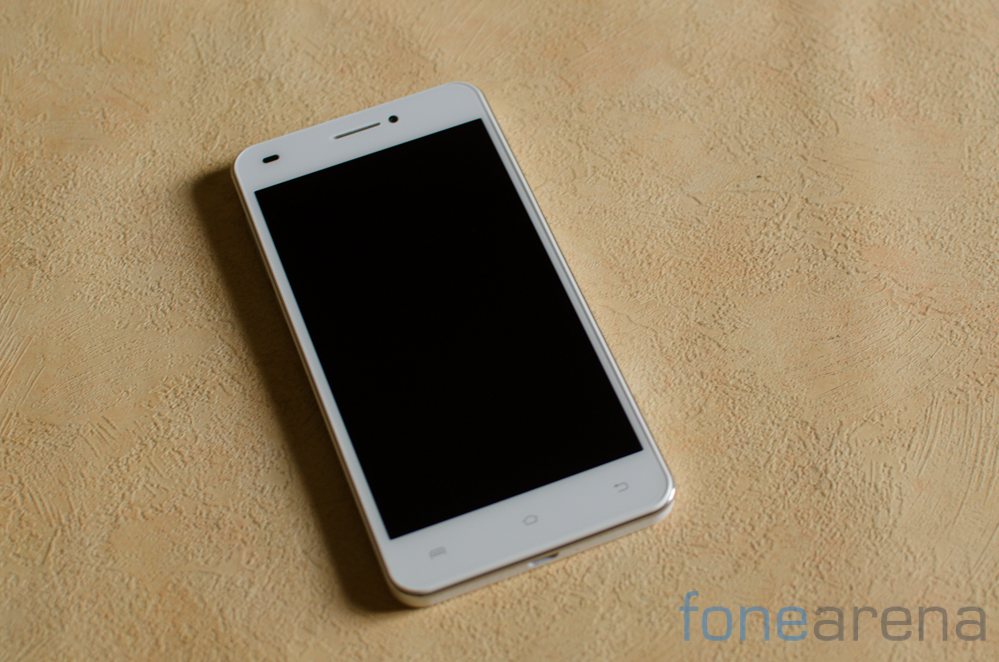
The XOLO Q1200 looks quite good but is a bit unoriginal in its design aspirations. Having borrowed heavily from the iPhone, we wish there was a modicum of inventiveness which is much needed in the Indian smartphone space. Add to that the quality of plastics used and we weren’t entirely impressed. With that in mind, can the software redeem the handset? Keep reading to find out.
Software
The phone runs Android 4.2.2 which on its own is somewhat forgivable, what isn’t however is the uncharacteristically ugly skin on offer. We’re not fans of manufacturer ordained interface layers and definitely not so when the customizations include haphazardly placed UI elements as well as a garish color scheme.
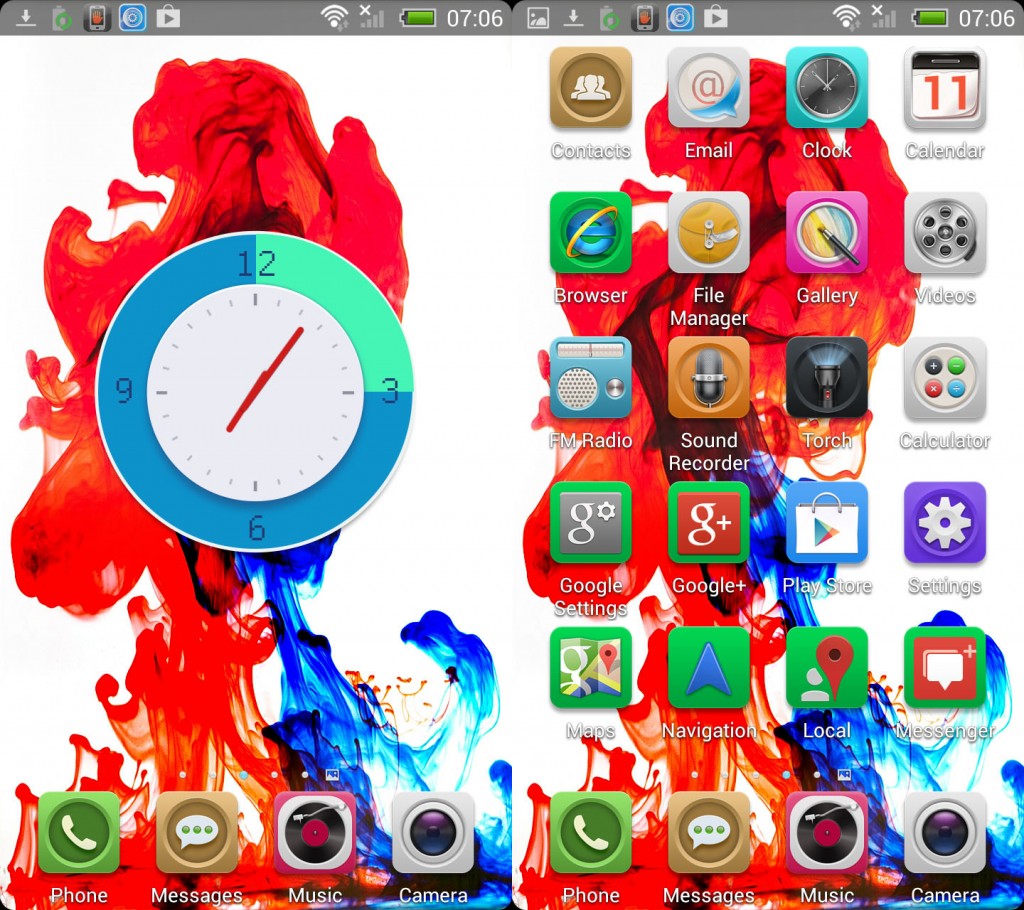
The iPhone inspired design continues on the software front too as the handset completely lacks an app drawer. The interface too often sports a back button which is redundant given the presence of a capacitive back button on the device. The choice of wallpaper and icon sets too is very questionable as the color scheme is not just ugly to look at but also makes things hard to read.

Our interface related concerns extend across various aspects of the UI. The notification center is all too busy with way too many prompts and preinstalled applications hogging the tray. Several of the widgets that come preinstalled and applied also take up too much space. Case in point the photographs widget shown above.
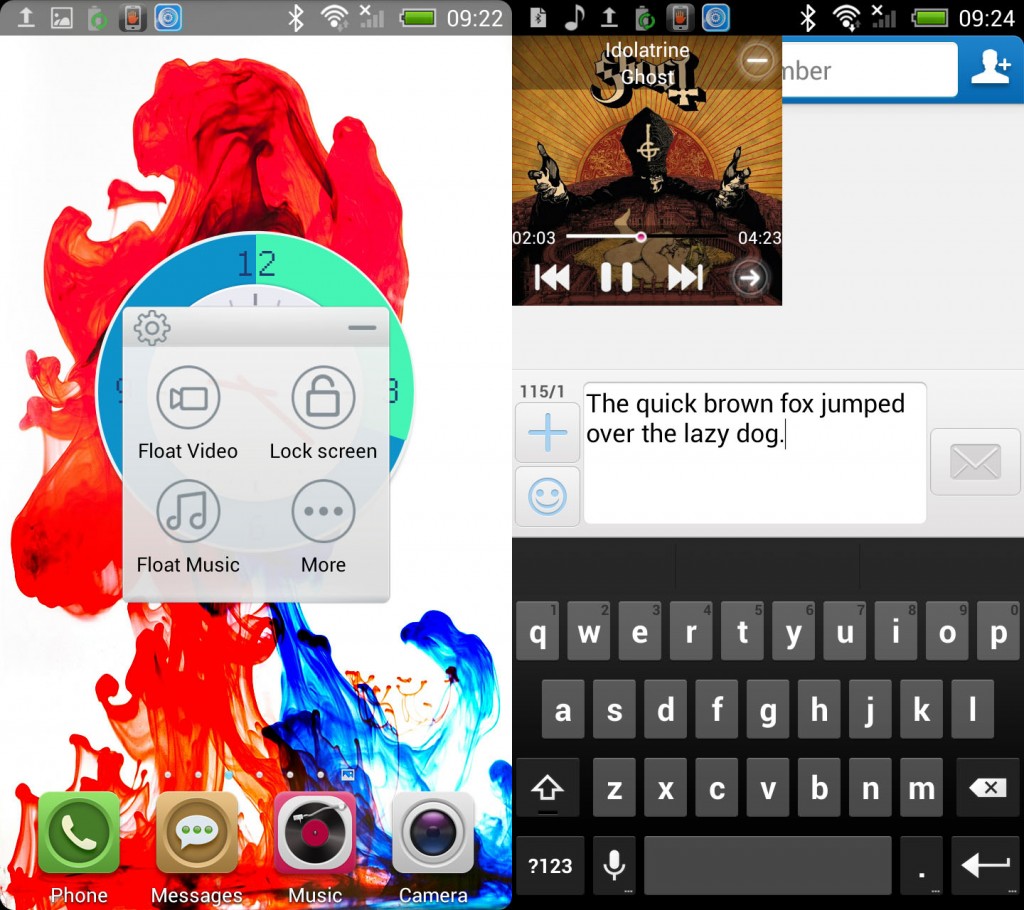
There is built in support for gestures but these are hidden deep down under the accessibility settings which makes us wonder how many users would even find them. It is possible to double tap to wake the handset, draw gestures on the screen to launch specific apps and there’s also the usual flip to silent feature. While nice to have, most of these prove to be gimmicks that users would get tired of after a few days of experimentation. The phone also has voice recognition capabilities but we were unable to get this working. There are a whole host of ‘hidden’ features in the device, software features that remain undocumented but that you chance upon while playing with the handset. Amongst our favorites were the handy floating video & audio players built into the phone itself.
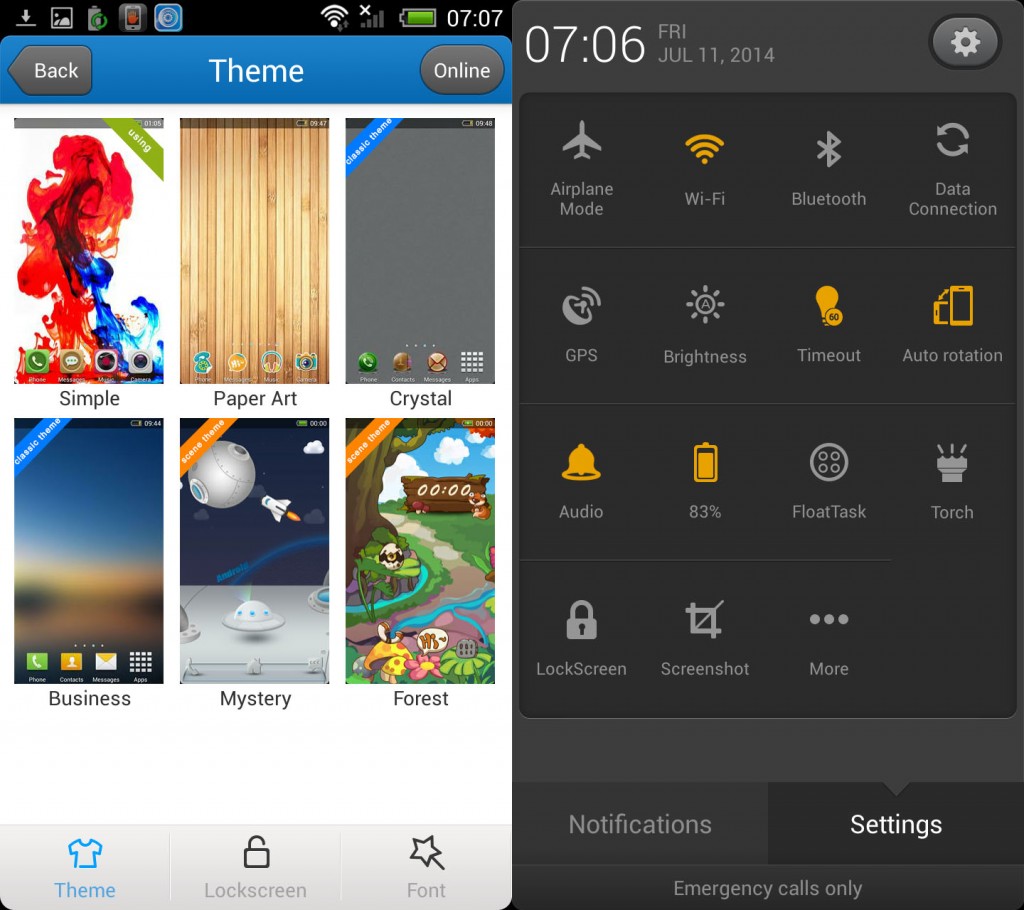
The XOLO Q1200’s interface seems like an unfinished product. There are a fair few ideas here that could prove to be excellent additions on fruition but as it stands, there’s too much clutter and ideas that come off as gimmicks due to the incomplete nature of their application. Pro tip: Stick to the Business theme if you want something that comes close to stock Android or better still, switch out the launcher.
Performance
With a 1 .3 GHz quad-core MediaTek MT6582 processor powering the show and a Mali 400 MP2 GPU, we hardly expected the phone to be a scorcher and it isn’t one either. There’s 1GB of RAM onboard and that’s just about sufficient for ensuring smooth and lag free operation.
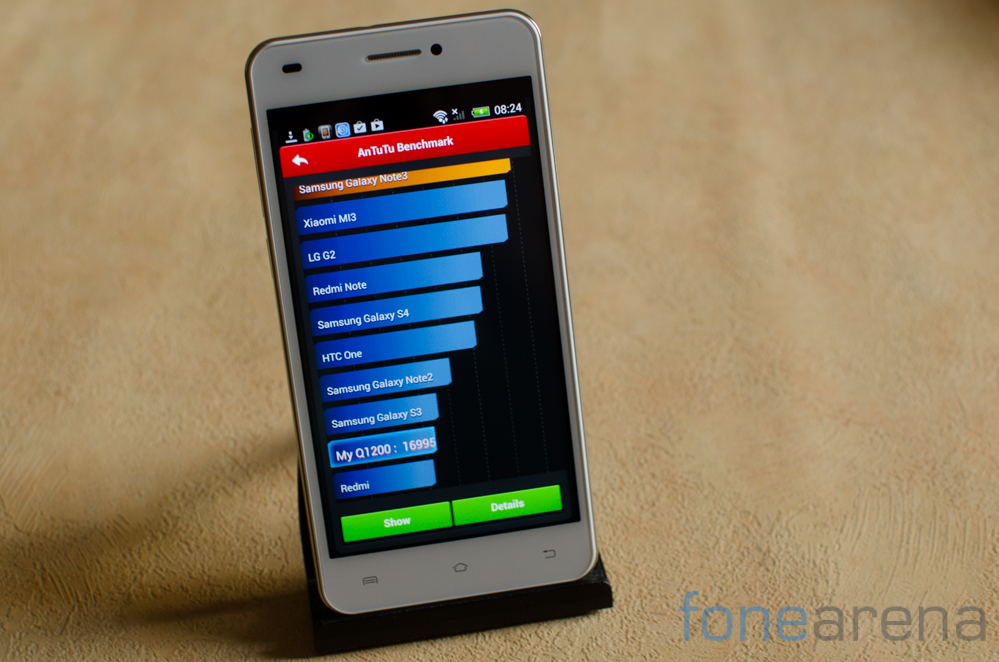
We were fairly impressed by how smooth operation was across the board with not much of a frame rate drop even during heavy multitasking. The phone is predictably lacking when it comes to synthetic benchmarks but that isn’t the be all and end all. In day to day operations, the phone is good enough though graphically intensive games do tend to make it heat up and drop frames. We’ve included some key benchmark figures below.
AnTuTu
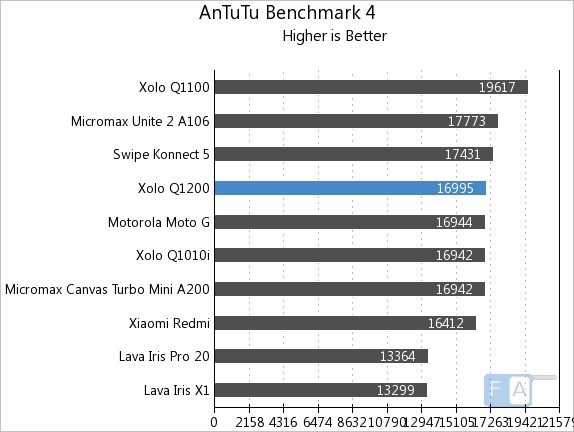
AnTuTu is a full system test that gives a cumulative score across CPU, GPU and memory performance. The phone scored 16995 points here which places it right in the middle of its competition.
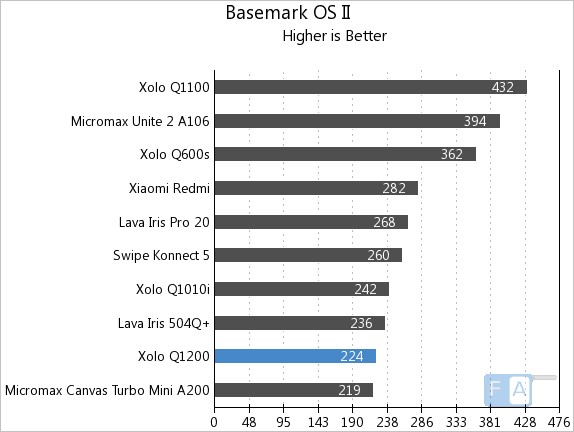
In the Basemark benchmark, the phone didn’t perform particularly well and scored just 224 points.
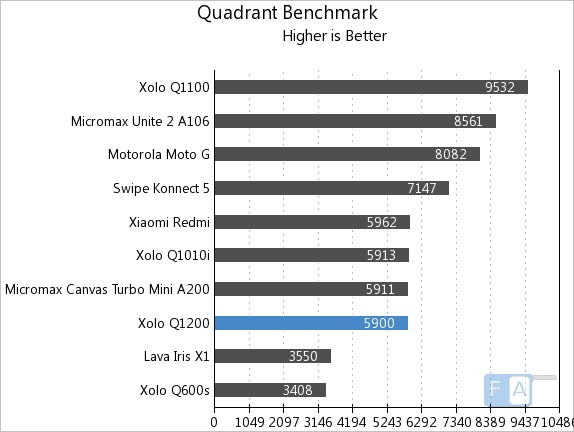
Similarly in Quadrant, the XOLO Q1200 scored 5900 points which places it towards the lower end of the spectrum. As we stated earlier, synthetic benchmarks are only part of the story and it is the user experience that really matters and we found the phone to be generally speedy enough to not have any show stopping issues.
Display
The display on the XOLO Q1200 is its redeeming factor. Bright with vivid colors and fantastic viewing angles, there is little to complain about the screen on the handset. The phone uses a panel made by LG and the quality really shows.
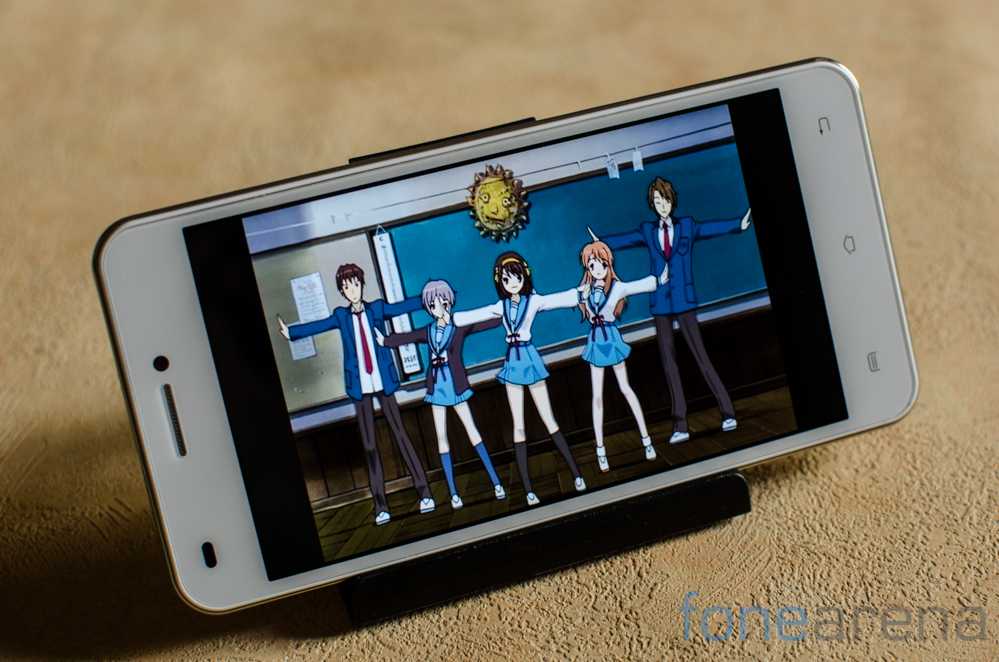
Sunlight visibility too was quite good and perhaps better than a lot of the competition. Being a 720p panel with a pixel density of 294ppi stretched across 5 inches, there are inevitably a few jaggies that can be spotted around text and iconography but its really not bad enough to complain about.
Camera
The camera sensor at the back of the phone is a Sony made Exmor R unit. While not the really latest generation hardware, it is still superior to the low end competition. At least on paper. Real life performance left much to be desired with soft images and inaccurate colors all around.
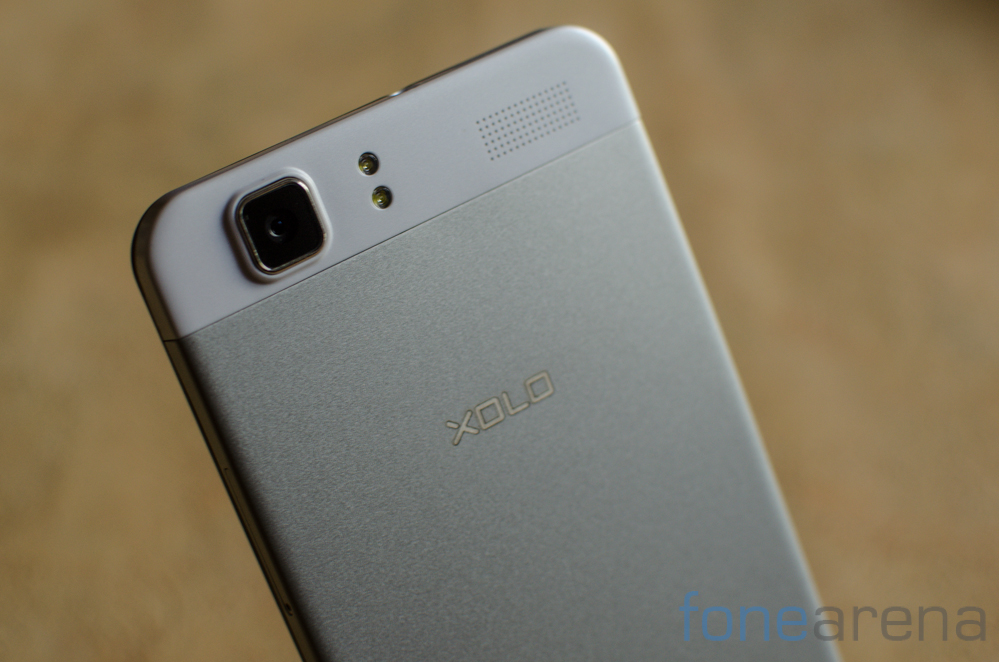
The camera is an 8MP module and sticks out of the rest of the body of the phone. There’s a dual LED flash next to it. The camera module is covered by Gorilla Glass which we expect should reduce the chances of getting scratches on the lens.

Coming to actual image quality, the phone isn’t impressive at all. While brightly lit objects are photographed fairly easily, pixel peeping will still show a lot of noise. In anything less than ideal lighting, the phone will struggle to get a focus lock and to take a crisp and clear shot given the rather long shot to shot time. Additionally, the dynamic range in the module is particularly poor as shooting into the setting sun darkened everything out far beyond what you’d expect. The camera can shoot Full HD videos though the quality is just about usable.
Battery Life & Connectivity
The XOLO Q1200 is equipped with a 2,000 mAh battery which depending on your specific use case should be good enough to last a full work day.Since the back cover is not removable, it is not possible to replace the battery by the user. In our testing, we were able to get through a full day of use with a few hours of music listening, some photos, a couple of email accounts constantly syncing over and a bit of calls & texting.
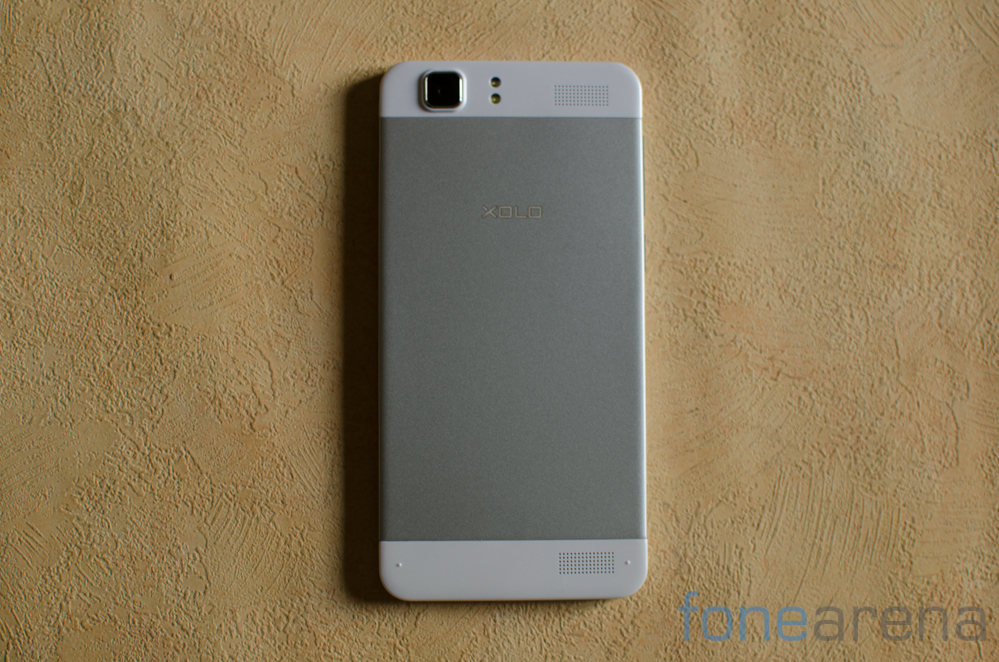
The phone has standard connectivity options including Bluetooth and WiFi. There’s a microSD port built in to add to the built in 8GB of storage. Of the 8GB storage, 5GB is available to the end user. It is possible to install apps on the SD card.
Conclusion
The XOLO Q1200 isn’t a breakthrough device. Nor is it a phone that particularly stands out. The lack of hardware differentiation makes it a handset that is yet another mid range Android running phone. The software proves to be half baked and the hardware too lacks polish.

In light of recently announced phones like the Xiaomi Mi3, the Asus Zenfone 5 and the tried and test Moto G which are all available in the same price range as the XOLO Q1200, it is hard to recommend the handset.
Pros
- Display
- Smooth Performance
Cons
- Camera quality
- Hardware

